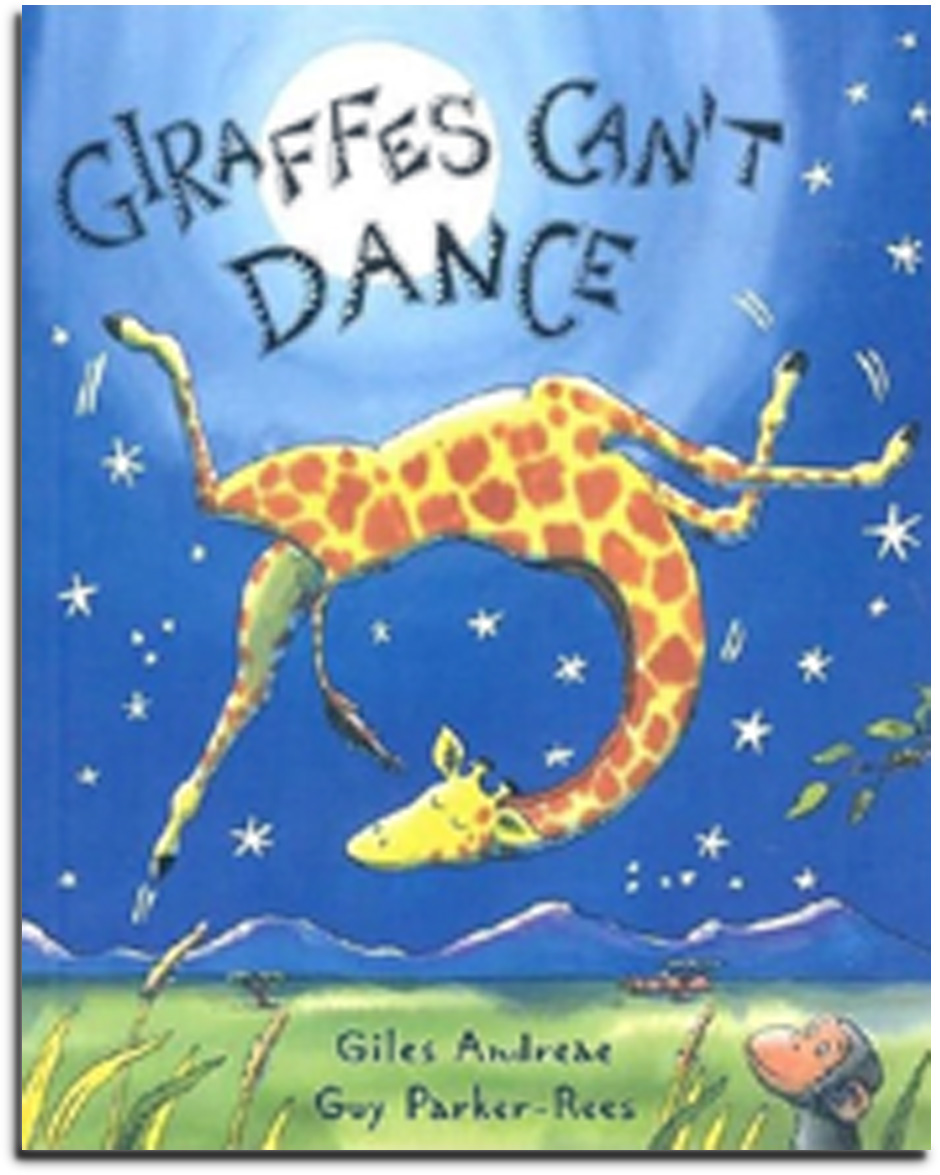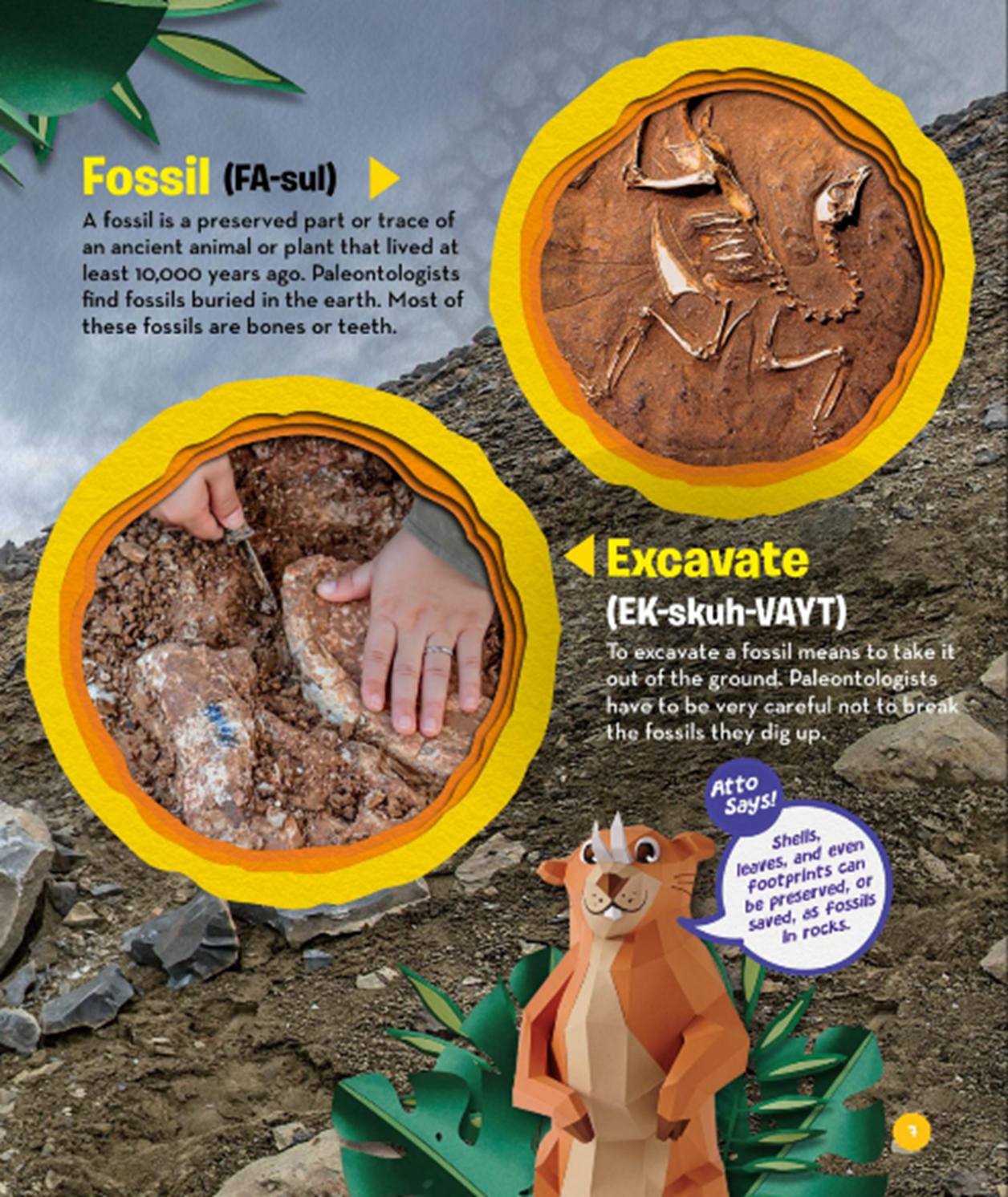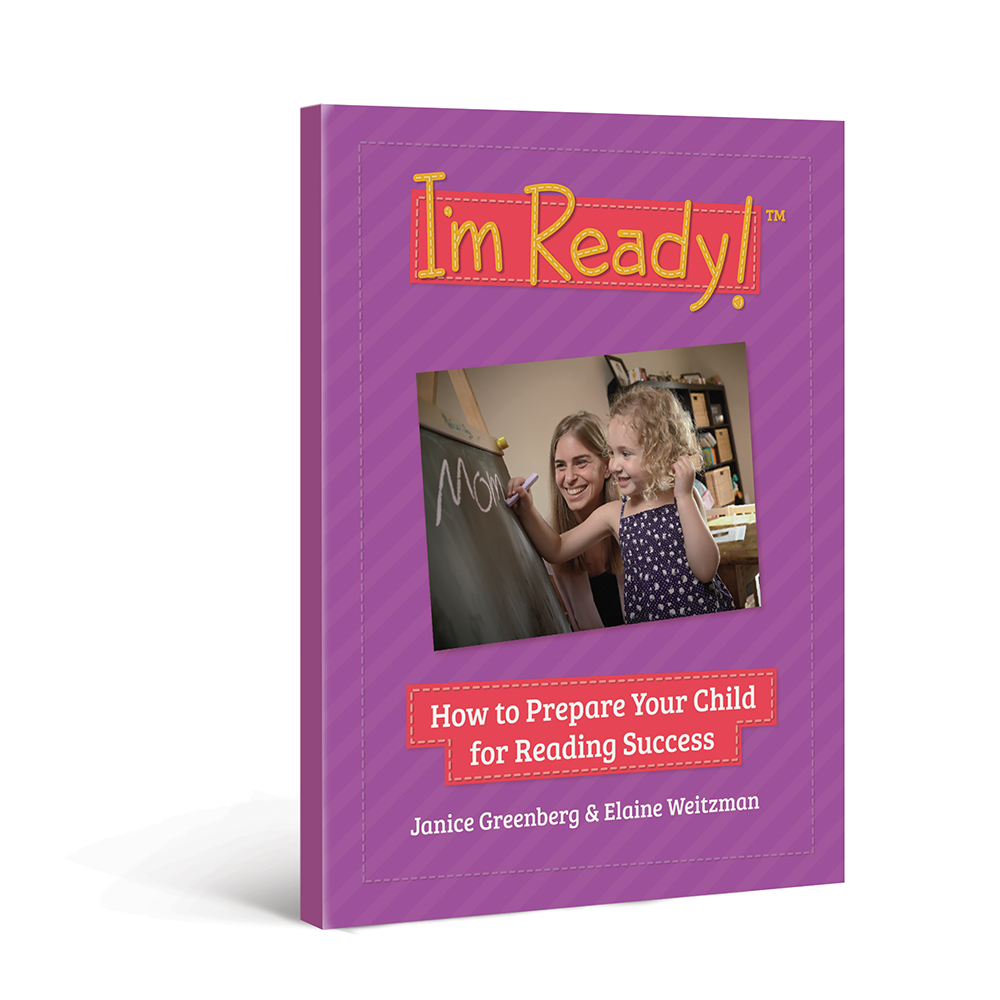This month's Book Nook topic is...
Building Vocabulary with Giraffes Can't Dance

Studies show that the larger a child’s vocabulary when she starts school, the better her reading comprehension will be later on. In this Book Nook topic, I’ll share some helpful tips for how to introduce new words and build children’s understanding of them.
Let’s get started!
The Book:
Giraffes Can't Dance by Giles Andraea, illustrated by Guy Parker-Rees
Why we chose it
This book was introduced to me by a preschool teacher who said that it captivated even her most reluctant readers. It’s a touching story that most children can relate to. Gerald the giraffe’s lack of coordination gets him teased, but once he learns to literally dance to his own beat, he becomes an elegant dancer.
The illustrations are detailed and whimsical, and the text is told in rhyme. It’s easy on the eyes and ears of any listener! What’s more, there are rare or uncommon words on almost every page, which makes it an ideal book for introducing higher level vocabulary.
Why introduce new vocabulary?
Vocabulary is an essential element of emergent literacy. The more words a preschooler understands, the better his or her reading comprehension. But just exposing children to new words is not enough. We have to take the time explain those words to deepen children’s understanding of them.
Picking appropriate words
Once a child understands basic, everyday words (such as “wet”, “small”, “laugh”, etc.), we want to start “stepping up” his vocabulary by introducing more rare words (think of “damp”, “tiny”, “giggle”). Ideal words are those that:
- can be used frequently in many different situations
- can be related to your child’s life
Books are a great source for new vocabulary, because they often contain words we don’t use every day. Also, we can usually use the context of the story to help explain new words.
A word that appears in Giraffes Can’t Dance is entranced. This is definitely a rare word, but it applies to most preschoolers. How many of you have seen a child whose attention is completely held by what he is watching?
Shoot for the SSTaRS
At The Hanen Centre, we talk about making new words “sparkle”, or stand out, by using a strategy called “Shoot for the SSTaRS”. It’s an acronym that stands for: Stress, Show, Tell and Relate, and Say it again. Let’s shoot for the SSTaRS with “entranced”.
Stress
Make entranced stick out from the other words by saying it louder and slower than the rest of the text. You can also pause before and after saying the word.
Show
You can show what a word means in a variety of ways – the easiest of which is using the illustrations in the book. You can point to the picture of all of the animals watching Gerald.
Tell
Give the child a short definition of the word entranced. You could say, “Entranced means that they’re paying so much attention to Gerald, they don’t see or hear anything else.” Or, tell the child what is not being entranced: “The animals are not getting distracted by anything else, they are completely focused on Gerald’s dancing.”
and Relate
Relating the new word to other concepts or experiences is extremely important. This will help the child associate the word with other situations, and will make the word much more relevant to him. Relate this word to other experiences by saying “Remember when you were watching Octonauts and Ravi couldn’t get your attention because you were entranced by the TV show?” Or “Have you ever been entranced by anything?” You might also want to share your own experiences of being entranced.
Say it again...!
This is another essential step to consolidate the child’s learning: repeat the word both by re-reading the book, and by saying the word again in other situations. For example, if you notice the child sitting with a book, or completing a puzzle you could say, “Wow, you look very focused on that puzzle, you seem entranced.”
Giraffe’s Can’t Dance is a book that lends itself very well to being re-read because there are so many rare words, and the story is very heart-warming. Use this to your advantage, and shoot for the SSTaRS with entranced and other rare words every time you read.
The first time you read the book:
Introduce new vocabulary words by Stressing, Showing, and Telling the words. Try to keep your explanations short so that you don’t interrupt the flow of the book, or take away from the overall storyline.
The second time you read the book:
Now that the child has heard the whole story, you can go deeper into your conversation about entranced. This is a great opportunity to Relate the word to the child’s experiences.
The third time you read the book:
Perhaps you can relate the word to other experiences, or situations, or you could act out a scenario where one of you is entranced. Also, make sure to start introducing other rare or new words to the child.
And make a point of using the new word during everyday conversations – that’s going to help your child use the word himself during everyday conversations. You’ll know it’s working when, one day, your child says, “Look! He’s entranced with that video game!”
Why we chose this book
Choosing a book with rare words often requires us to look beyond typical words we hear in daily conversation. While many children’s books include vocabulary that isn’t used in everyday conversation, information books about specific topics like wild animals or transportation are a great way to introduce rare vocabulary because they often include words that are specialized and focused on a specific topic.
Big Words for Little Paleontologists is a special interest book for young dino enthusiasts. This book is full of rare vocabulary with pronunciation guides, simple definitions and beautiful illustrations and photographs to support the child’s understanding of these rare words. Some rare words in this book are: “excavate,” “awl,” “omnivore” and “paleobotany.” Because these are words we don’t typically read or hear, taking time to highlight these words while you share this book will help expand the child’s knowledge and vocabulary.
Shoot for the SSTaRS
At The Hanen Centre, we talk about making new words “sparkle”, or stand out, by using a strategy called “Shoot for the SSTaRS”. SSTaRS is an acronym that stands for: Stress, Show, Tell, Relate and Say it again. For children to make sense of new vocabulary, rare words can be highlighted and explained using the SSTaRS strategy.
Let’s Shoot for the SSTaRS with the word “excavate.”

Stress
You can make “excavate” stand out from the other words by saying it louder and slower than the rest of the text. You can also pause before and after saying the word.
Show
You can show what a word means by pointing to the picture, showing a prop, or using a gesture or facial expression. In Big Words for Little Paleontologists, you could point to the photo beside the word “excavate” as you say it.
Tell
Give the child a short definition of the word. Definitions of rare words are found throughout this book, for example: “To excavate a fossil means to take it out of the ground. Paleontologists have to be very careful not to break the fossils they dig up.”
and Relate
Help the child connect this word to their own knowledge and experiences by relating “excavate” to other words or experiences they’re familiar with. This makes the new word easier to understand, remember and later use. You could relate the word “excavate” to the child’s experiences by saying something like, “You used your shovel to excavate the shells from the sandbox. When you carefully dug the shells out of the sand, you were excavating them.”
Say it again – and read it again!
One of the best ways to make words sparkle is to read the same book three times. Re-reading a story increases the child’s familiarity and helps deepen their understanding of new vocabulary with more opportunities to discuss new concepts. The more a child hears and talks about a new word, the better they will understand it and be able to use it.
The first time you share Big Words for Little Paleontologists with the child, choose only a few words to highlight using the SSTaRS strategy. After reading the book, try to use the new word(s) in other situations. For example, if you see a backhoe working outside, you could say, “Look, they’re digging a big hole! They’re excavating by taking the dirt out of the ground." By the second or third time you revisit the book, you may notice the child using the new words themselves!
In conclusion...
While children hear many words in a day, just hearing the words isn’t enough to build their vocabulary. When you highlight new words using the Shoot for the SSTaRS strategy, you help deepen their understanding of new words. Sharing a special interest book and highlighting rare vocabulary provides rich learning opportunities that support reading and academic success.
More Resources
The strategies in this Book Nook post are drawn from Hanen’s practical, research-based guidebooks for building emergent literacy. Explore the links below to learn more about how these guidebooks can support you.
For Parents I'm Ready! guidebook
I'm Ready! guidebook
For Educators ABC and Beyond guidebook
ABC and Beyond guidebook
